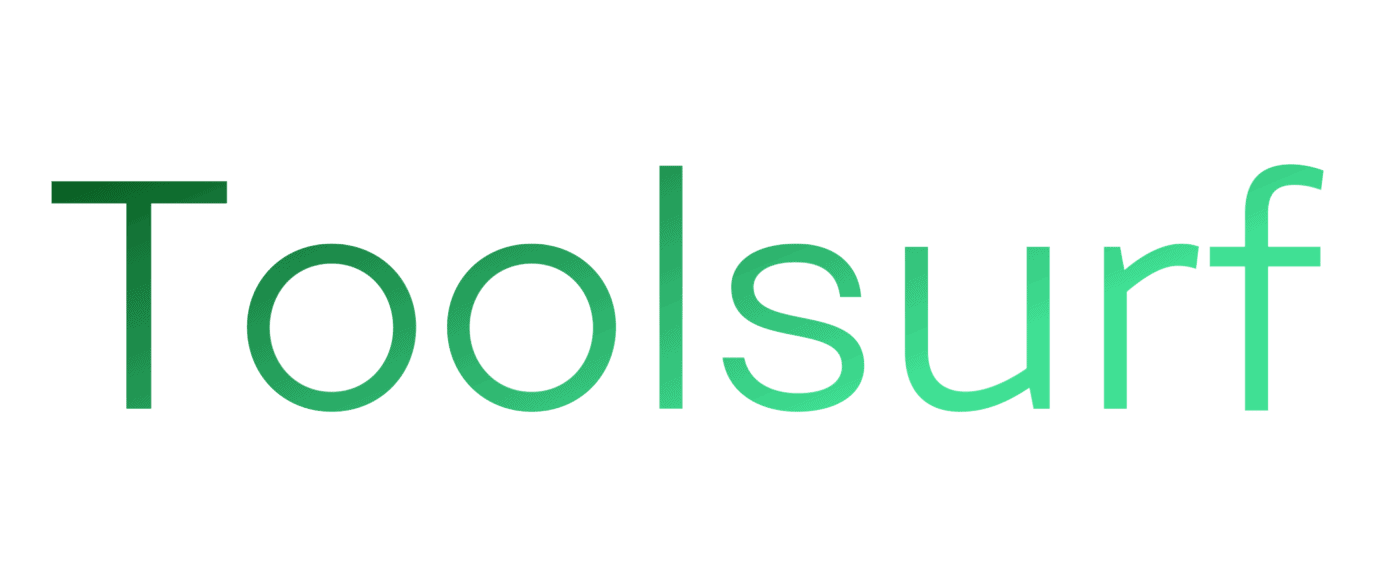DigitalVision SEO Tools Review: Features & Limits
Can one platform truly replace a stack of paid SEO and AI tools without hidden trade-offs? This question matters for marketers who must hit deadlines, control budgets, and deliver clear results.
In this brief look, we set expectations for U.S. marketers by comparing what Digital Vision claims to offer against real customer experiences and alternatives like Toolsurf.com.
The focus here is practical: which software and tools speed up keyword research, content, and multimedia work? We explain where the company shines and where friction—like login contention or uptime—can slow campaigns.
Read on to see how consolidated access to top tools impacts cost, campaign velocity, and support needs for agencies and freelancers.
Key Takeaways
- Digital Vision promises broad tool access but check uptime and support claims before you commit.
- Consolidated platforms reduce switching costs and speed iteration for marketing teams.
- Shared-account limits can cause login conflicts and delivery risk for agencies.
- Compare tool coverage and SLA details against alternatives like Toolsurf.com.
- Prioritize providers that match your budget, risk tolerance, and client SLAs.
At a Glance: What “Digital Vision/Digitavision” Claims vs. What Users Report
Here we line up marketing claims with on-the-ground user feedback to highlight real-world gaps.
What the site markets: broad tool access, fast onboarding, and consolidated workflows aimed at agencies and solo marketers. Pricing and feature lists promise quick value for content, SEO, and multimedia work.
What users report: a mixed picture. Public ratings show a 3.8/5 score with many 5-star entries but a notable 15% 1-star share. Complaints name shared-account contention (notably with Ahrefs), intermittent instability, and slow or nonresponsive support that can block deliverables.
Why this matters for U.S. marketing teams
Marketing operations depend on uptime, seat availability, and prompt support. When shared seats clash or tickets go unanswered, campaigns miss deadlines and client trust erodes.
Quick verdict snapshot
- Strengths: strong tool depth for certain apps (users praise Ahrefs features).
- Gaps: recurring reports of login contention, refund friction, and unstable sessions.
- Who it fits: solo users or small projects with flexible timelines; teams needing guaranteed uptime or 24/7 support should weigh alternatives.
For context, competitors like Toolsurf.com advertise single-tool trials at $1/day, packages from $19.99, and 100% uptime with 24/7 support — a useful benchmark when assessing claimed value versus real-world delivery and feedback.
digitalvision review: Core Features, Toolset, and Real-World Limits

Tool access model and shared-account constraints
Shared accounts can bottleneck essential tools when multiple users log in at the same time.
Reports show Ahrefs sessions locked or dropped, which interrupts work and wastes time. This is common when a toolset relies on pooled seats instead of on-demand logins.
Feature highlights users liked and missing depth
Many users praised Ahrefs usability and core software features for research tasks.
But newcomers often find missing tutorials and limited competitor-analysis depth. Better onboarding and clearer application guides would shorten the learning curve.
Noted limits: instability, crowded seats, and refund complaints
Instability and crowded seats are repeated complaints. Delayed or absent support makes outages worse during critical campaign windows.
“I got locked out mid-audit and support took days to reply.”
Refunds and rude staff reports further raise risk for buyers who need recourse quickly.
- On-demand logins without contention and documented SLAs reduce risk.
- Consistent uptime and 24/7 support shorten time-to-resolution.
- Compare access models—secure instant access (Toolsurf.com’s model) avoids many group-buy pain points.
Pricing Breakdown: How DigitalVision Stacks Up Against Toolsurf.com
Budgeting for SEO tools is as much about access reliability as monthly fees.
Perception of price — Many users call the site overpriced when uptime and seat limits reduce productive hours. Reviews note a mismatch between money spent and consistent access to top software. That perception drives buyers to compare clear, low-cost options.
Toolsurf.com pricing offers transparent options: single-tool trials at $1/day, plans from $3/month, and tiers such as Lite $19.99/month, Agency $29.99/month, and Enterprise $69.99/month. The site also promises 100% uptime and 24/7 support across a broad tools catalog.
| Plan | Trial / Price | Uptime & Support | Who it fits |
|---|---|---|---|
| Single-tool | $1/day | Varies | Short audits, test drives |
| Starter | From $3/month | Standard | Solo users |
| Lite / Agency / Enterprise | $19.99 / $29.99 / $69.99 per month | 100% uptime & 24/7 | Freelancers to agencies |
Value comparison centers on cost-per-seat during peak use and the tool count included. A low monthly price can still cost more if shared accounts cause retries or blocked sessions.
- Clear trials and tiered packages make budgeting easier for teams.
- Count tools you actually use; this yields a true month-over-month price per task.
- Fast support and uptime reduce hidden costs tied to missed deadlines.
User Ratings and Experiences: What Recent Reviews Actually Say
User ratings often hide practical issues that surface only during heavy use. Below we unpack headline scores and the stories behind them to give teams a clearer picture of operational risk.
Third‑party score snapshot
Five.Reviews lists “Digital Vision EA” at a 3.25/5 score across 12 entries. Comments mix praise for onboarding with complaints about slow UX and perceived low value.
Platform sentiment and recurring themes
Internal listings show a 3.8/5 average with 81% five-star and a notable 15% one-star share. That gap signals uneven user experiences.
Common pain points include shared-account congestion, long support waits, tool glitches, and refund friction. Positive feedback often cites helpful onboarding and usable flagship software features.
“I got locked out mid-audit and support took days to reply.”

| Source | Score | Top praise | Top complaints |
|---|---|---|---|
| Five.Reviews (Nairobi) | 3.25/5 | Onboarding help | Slow UX, value concerns |
| Platform listing | 3.8/5 | Tool usability | Shared seats, support delays |
| Context (Toolsurf.com) | Benchmark | 100% uptime, 24/7 support | — |
Takeaway: headline ratings can look solid, but the web feedback shows operational hiccups that matter at delivery time. Confirm SLA and refund policies if steady access is a critical thing for your customers or team.
Reliability, Support, and Trust Signals That Influence Outcomes
Reliable access and clear public feedback shape buying decisions for marketing teams.
Why Google listings matter: Google reviews and Maps entries sit front and center when teams research a company. High-visibility, recent feedback validates claims quickly. Buyers often trust these sources more than isolated testimonials because they show date-stamped customer behavior and trends.
How review cadence shapes buyer confidence
Consistent, recent reviews signal a responsive company. When public feedback highlights repeated outages or slow replies, that raises risk for project timelines.
Trust signals that matter include uptime commitments, rapid support response, and transparent incident communication. These reduce managerial overhead and keep teams focused on work instead of firefighting.
Comparing feedback patterns and support models
Reports tied to the other platform show recurring silence from support and unstable sessions. By contrast, an uptime-backed provider that promises 100% uptime and 24/7 support positions itself to protect campaign results and client relationships.
“When access fails at deadline time, even small outages cost client trust.”
| Trust Signal | Why it matters | What to verify |
|---|---|---|
| Public reviews (Google) | Shapes first impressions and visibility | Recent dates, balanced sentiment, response from company |
| Uptime commitment | Keeps production on schedule | SLA details, historical status dashboard |
| 24/7 support | Reduces time-to-resolution across time zones | Response SLAs, channel options (chat, email, phone) |
- Check review sources and reply history to judge credibility.
- Probe SLAs and escalation paths before signing for critical work.
- Prefer providers that document incidents and keep public status pages.
Bottom line: For U.S. marketing teams, verified public reviews plus an uptime-backed support model help protect delivery, preserve results, and reduce day-to-day friction on the front lines of production.
Why Toolsurf.com Is the Top Alternative for SEO and AI Workflows
Teams need instant, reliable tool access to keep campaigns moving. Toolsurf.com packages secure, instant logins and a broad toolset so marketing work doesn’t stall under shared-seat limits.

#1 SEO group buy: secure, instant access at a fraction of the cost
Secure, on-demand access replaces pooled accounts that cause login conflicts. That reduces downtime and keeps audits, reports, and campaigns on schedule.
SEO tools lineup
The SEO toolset includes Ahrefs, Semrush, BuzzSumo, KWFinder, Helium10, and Moz. These tools cover keyword research, backlink analysis, and reporting in one place.
AI writing & content
Content services range from Jasper AI and WordAI to StealthWriter AI, Originality.ai, Roundups.ai, and Peppertype AI. They speed drafts, checks, and idea generation for content teams.
AI art, video, audio
Creative pipelines pull from Midjourney, Leonardo AI, InVideo Studio, HeyGen, Fliki, Murf AI, and more. That supports images, video, and voice assets without extra vendor setups.
Plans that scale
Pricing is transparent: single-tool trial $1/day, plans from $3/month, and tiered Lite $19.99, Agency $29.99, Enterprise $69.99. The website promises 100% uptime and 24/7 support for fast issue resolution.
| Plan | Price | Uptime & Support | Best for |
|---|---|---|---|
| Single-tool | $1/day | Varies | Short audits, test drives |
| Lite | $19.99/month | 100% uptime, 24/7 | Solo marketers, small teams |
| Agency / Enterprise | $29.99 / $69.99 | 100% uptime, 24/7 | Growing agencies, enterprise business |
Bottom line: Toolsurf.com consolidates essential software and creative tools into one service. For marketing teams and customers who value uptime, this option reduces risk and simplifies billing. Many teams would recommend testing the trial; given the coverage and pricing, we would definitely recommend it for performance-focused groups.
Decision Guide: Which Service Fits Your Team, Budget, and Risk Tolerance?
Start by listing the routine things your team does; that list should drive your tool and service choice.
Make a quick inventory of weekly tasks: keyword research, link analysis, content drafts, creative assets, and reporting.
Map each thing to the tools that perform it well. Prioritize services with clear access models — dedicated logins beat shared seats during peak work time.
De-risk adoption: try single-tool trials like Toolsurf.com’s $1/day option, or start at low monthly entry points from $3. Scalable packages with 24/7 support and 100% uptime cut hidden costs tied to downtime.
- Estimate the number of overlapping users at peak time to avoid login contention.
- Compare pricing, trial flexibility, and how a service scales as your business grows.
- Check incident history and refund clarity so customer issues don’t become client problems.
“Compare time lost to access issues against the lift from proven uptime and round‑the‑clock support.”
| Decision Factor | What to check | Why it matters |
|---|---|---|
| Weekly tasks | Tool match for each thing | Ensures day‑to‑day work flows smoothly |
| Access model | Dedicated logins vs shared seats; SLAs | Reduces interruptions during delivery windows |
| Pricing & trial | $1/day trial, entry $3/month, scalable plans | Validate workflows without tying up money |
| Support & uptime | 24/7 support; 100% uptime promise | Protects results and client deadlines |
Final look: choose the way that balances pricing, growth options, and risk tolerance so your team spends time on work that moves the business forward.
Conclusion
Choosing a provider starts with testing day‑one access and response times.
In this review we weighed claims, public ratings, and real user experiences to show how access and support affect software value.
For marketing teams that need predictable results, the most important things are reliability, breadth of tools, and fast support.
We would definitely recommend trying low‑cost options first. Toolsurf.com offers secure, instant access, $1/day trials, plans from $3/month, and tiers at $19.99/$29.99/$69.99 with 100% uptime and 24/7 support.
Run a short trial to check logins, response times, and throughput. That practical test helps you pick the service that saves time, money, and customer headaches.
FAQ
What does DigitalVision claim and how do user reports differ?
Why should US marketers with informational intent care about this analysis?
What are the main strengths and gaps in this platform’s toolset?
How does the access model work and why do users object to shared accounts?
Are there consistent complaints about refunds or support?
How does pricing compare to Toolsurf.com and similar alternatives?
FAQ
What does DigitalVision claim and how do user reports differ?
The company markets an all-in-one SEO and AI toolset with broad access to premium apps. Users report that while many features exist, access can be limited by shared-account policies, occasional instability, and variable support responsiveness. Real-world uptime and seat availability may differ from marketing promises.
Why should US marketers with informational intent care about this analysis?
Marketers focused on research and content need reliable tools for keyword data, backlink analysis, and content quality checks. If a service has downtime or shared seats, it can delay campaigns and skew research accuracy — so assessing reliability and support is crucial for decision-making.
What are the main strengths and gaps in this platform’s toolset?
Strengths include access to familiar SEO apps and some intuitive interfaces comparable to popular products like Ahrefs. Gaps include limited depth on advanced features, occasional glitches, and confusion over account-sharing limits that reduce individual productivity.
How does the access model work and why do users object to shared accounts?
Many packages rely on pooled or shared logins to lower costs. Users object because shared seats can cause lockouts, inconsistent data access, and potential security concerns. Teams needing dedicated seats should verify terms and concurrency rules.
Are there consistent complaints about refunds or support?
Yes. Common complaints mention delayed or denied refunds and slow or unhelpful customer support. These issues appear tied to billing disputes and troubleshooting for tool outages rather than feature questions.
How does pricing compare to Toolsurf.com and similar alternatives?
Competitors like Toolsurf.com advertise trial pricing from
FAQ
What does DigitalVision claim and how do user reports differ?
The company markets an all-in-one SEO and AI toolset with broad access to premium apps. Users report that while many features exist, access can be limited by shared-account policies, occasional instability, and variable support responsiveness. Real-world uptime and seat availability may differ from marketing promises.
Why should US marketers with informational intent care about this analysis?
Marketers focused on research and content need reliable tools for keyword data, backlink analysis, and content quality checks. If a service has downtime or shared seats, it can delay campaigns and skew research accuracy — so assessing reliability and support is crucial for decision-making.
What are the main strengths and gaps in this platform’s toolset?
Strengths include access to familiar SEO apps and some intuitive interfaces comparable to popular products like Ahrefs. Gaps include limited depth on advanced features, occasional glitches, and confusion over account-sharing limits that reduce individual productivity.
How does the access model work and why do users object to shared accounts?
Many packages rely on pooled or shared logins to lower costs. Users object because shared seats can cause lockouts, inconsistent data access, and potential security concerns. Teams needing dedicated seats should verify terms and concurrency rules.
Are there consistent complaints about refunds or support?
Yes. Common complaints mention delayed or denied refunds and slow or unhelpful customer support. These issues appear tied to billing disputes and troubleshooting for tool outages rather than feature questions.
How does pricing compare to Toolsurf.com and similar alternatives?
Competitors like Toolsurf.com advertise trial pricing from $1/day and budget plans from roughly $3/month, plus clear tiered packages. Many users feel DigitalVision’s perceived price-to-value is higher due to access limits and instability, so cost-per-seat and uptime are key comparison points.
What do aggregated ratings and reviews indicate about overall satisfaction?
Mixed signals appear. Some listings show mid-range scores (around 3.25/5) and other profiles report average sentiment near 3.8/5 with polarized extremes — many five-star endorsements alongside a notable share of one-star complaints. This suggests strong positives for some users and serious negatives for others.
What reliability and trust signals should buyers check before committing?
Check third-party Google reviews, uptime guarantees, documented refund policies, and response times for support. Verify whether the provider offers dedicated seats, transparent concurrency limits, and real-time status updates to avoid surprises.
Why might Toolsurf.com be recommended as an alternative?
Toolsurf promotes secure, instant access with a wide lineup — Ahrefs, Semrush, Moz, AI writing tools, and creative apps — and transparent plans. For teams needing consistent uptime and predictable pricing, such platforms often present a lower-risk option.
What kinds of tools are typically bundled by top alternatives?
Top bundles include SEO staples (Ahrefs, Semrush, KWFinder), content and AI writing tools (Jasper, Originality.ai), and creative suites for AI art, video, and audio (Midjourney, HeyGen, Murf). Buyers should confirm which exact apps are included and any usage caps.
How should a small team choose between cost savings and reliability?
Determine your core workflows first: if uptime and dedicated access matter, prioritize platforms with guaranteed seats and responsive support even at higher cost. If you need breadth and can tolerate occasional limits, a cheaper shared-access plan may suffice temporarily.
What practical checks can I run during a trial period?
Test concurrent logins, run key reports during peak hours, evaluate support response times with a live ticket, and check billing/refund responsiveness. Also validate data freshness and match sample outputs against known benchmarks from trusted tools.
Is onboarding and friendliness to new users a common positive?
Yes—some users praise onboarding and initial friendliness, noting clear guides and fast setup. However, ongoing satisfaction depends on stability and sustained support quality beyond the first month.
Where can I see up-to-date user experiences and ratings?
Look at Google Reviews, independent aggregators like Five.Reviews, and community forums where customers share troubleshooting tips. Cross-reference multiple sources to spot consistent patterns rather than isolated opinions.
/day and budget plans from roughly /month, plus clear tiered packages. Many users feel DigitalVision’s perceived price-to-value is higher due to access limits and instability, so cost-per-seat and uptime are key comparison points.
What do aggregated ratings and reviews indicate about overall satisfaction?
Mixed signals appear. Some listings show mid-range scores (around 3.25/5) and other profiles report average sentiment near 3.8/5 with polarized extremes — many five-star endorsements alongside a notable share of one-star complaints. This suggests strong positives for some users and serious negatives for others.
What reliability and trust signals should buyers check before committing?
Check third-party Google reviews, uptime guarantees, documented refund policies, and response times for support. Verify whether the provider offers dedicated seats, transparent concurrency limits, and real-time status updates to avoid surprises.
Why might Toolsurf.com be recommended as an alternative?
Toolsurf promotes secure, instant access with a wide lineup — Ahrefs, Semrush, Moz, AI writing tools, and creative apps — and transparent plans. For teams needing consistent uptime and predictable pricing, such platforms often present a lower-risk option.
What kinds of tools are typically bundled by top alternatives?
Top bundles include SEO staples (Ahrefs, Semrush, KWFinder), content and AI writing tools (Jasper, Originality.ai), and creative suites for AI art, video, and audio (Midjourney, HeyGen, Murf). Buyers should confirm which exact apps are included and any usage caps.
How should a small team choose between cost savings and reliability?
Determine your core workflows first: if uptime and dedicated access matter, prioritize platforms with guaranteed seats and responsive support even at higher cost. If you need breadth and can tolerate occasional limits, a cheaper shared-access plan may suffice temporarily.
What practical checks can I run during a trial period?
Test concurrent logins, run key reports during peak hours, evaluate support response times with a live ticket, and check billing/refund responsiveness. Also validate data freshness and match sample outputs against known benchmarks from trusted tools.
Is onboarding and friendliness to new users a common positive?
Yes—some users praise onboarding and initial friendliness, noting clear guides and fast setup. However, ongoing satisfaction depends on stability and sustained support quality beyond the first month.
Where can I see up-to-date user experiences and ratings?
Look at Google Reviews, independent aggregators like Five.Reviews, and community forums where customers share troubleshooting tips. Cross-reference multiple sources to spot consistent patterns rather than isolated opinions.

